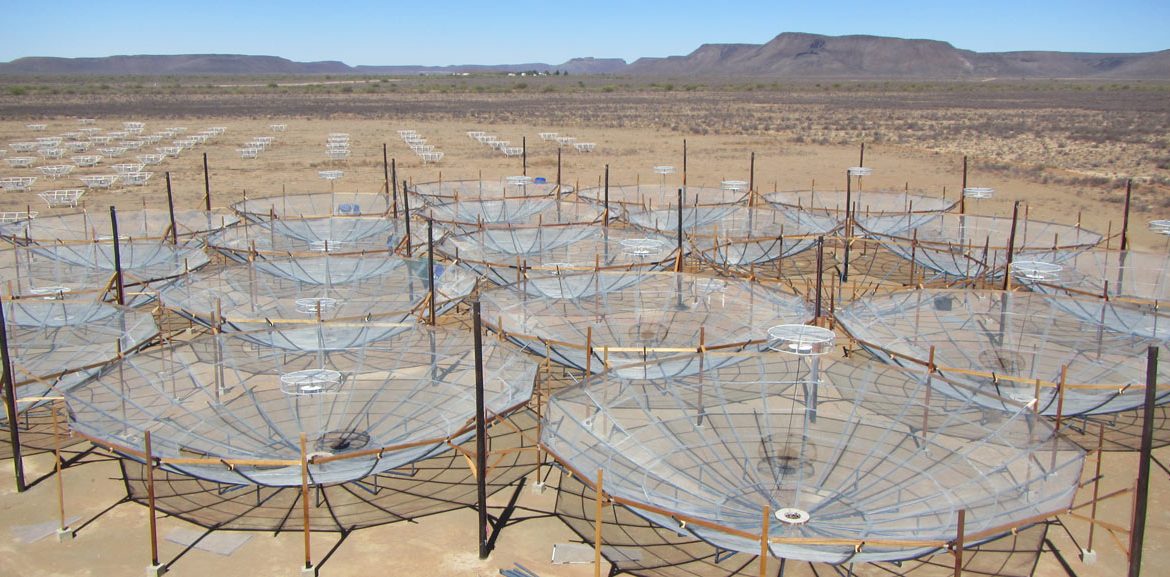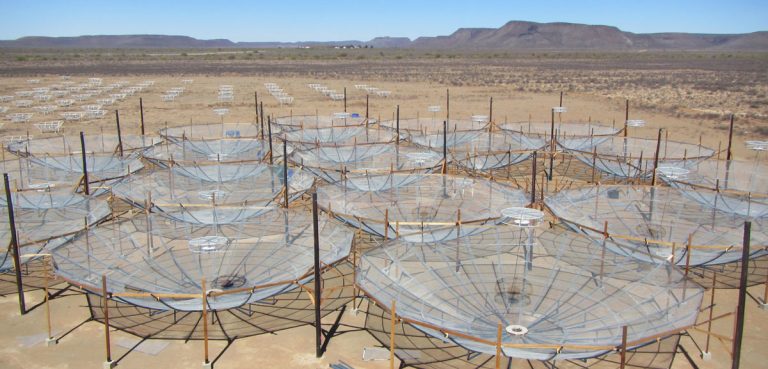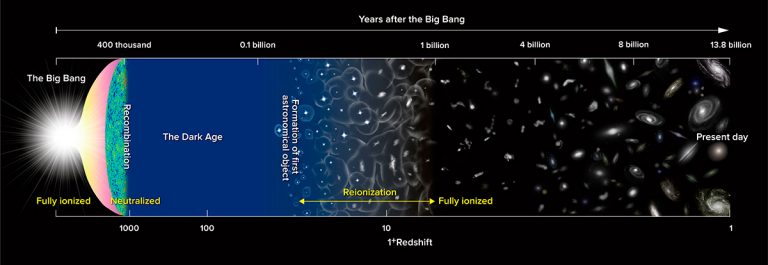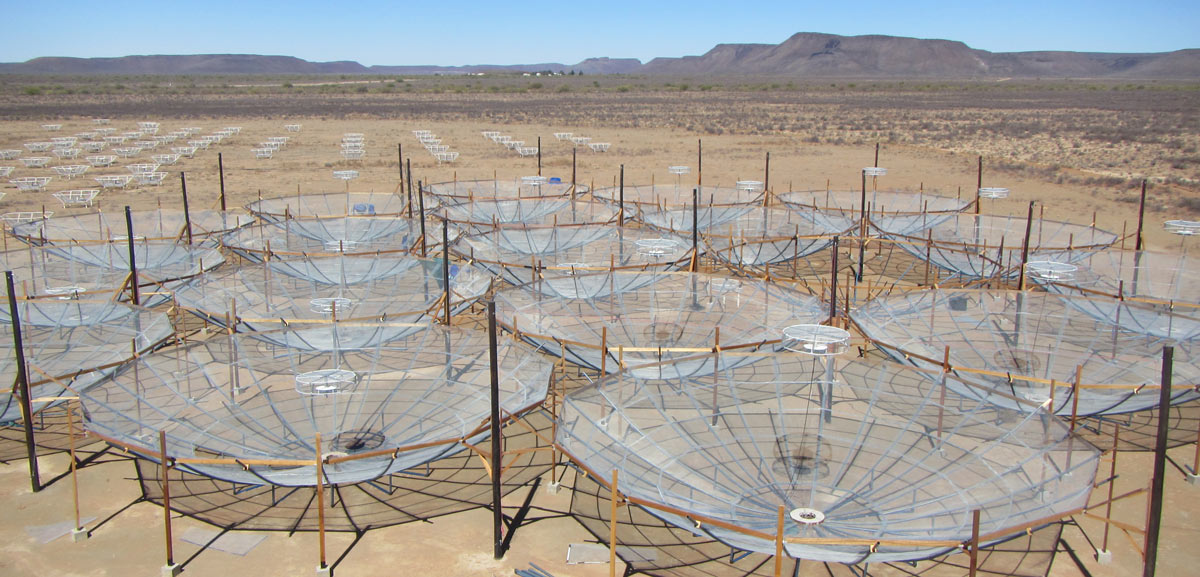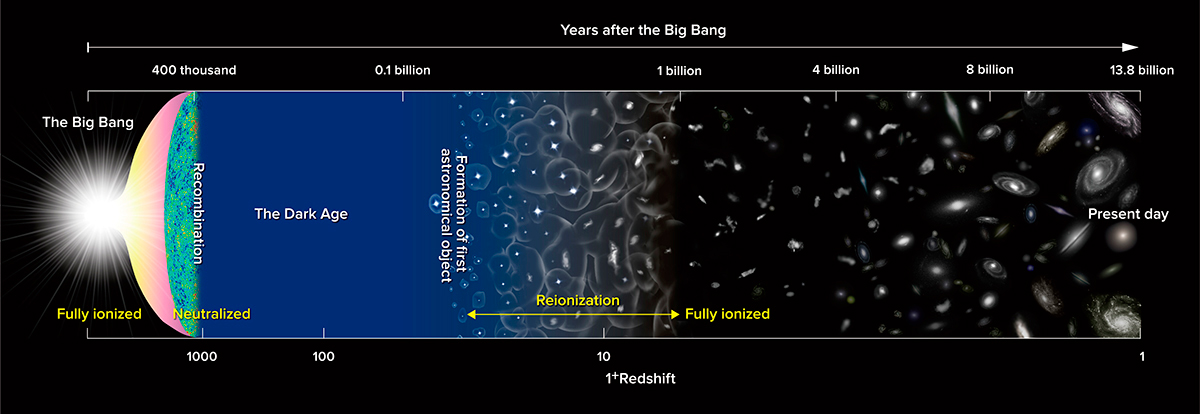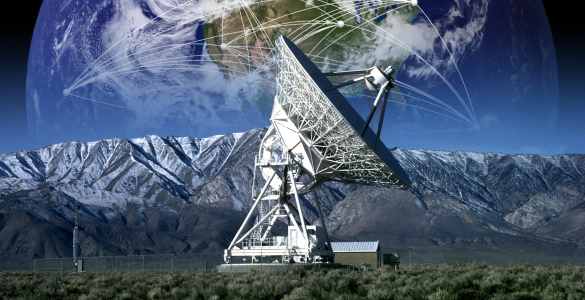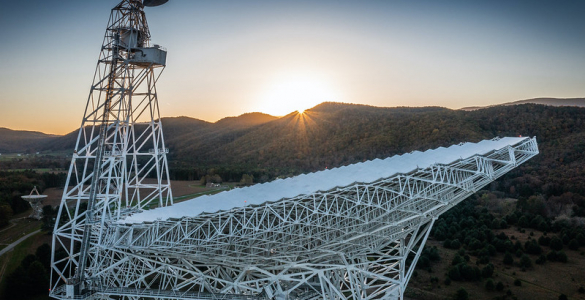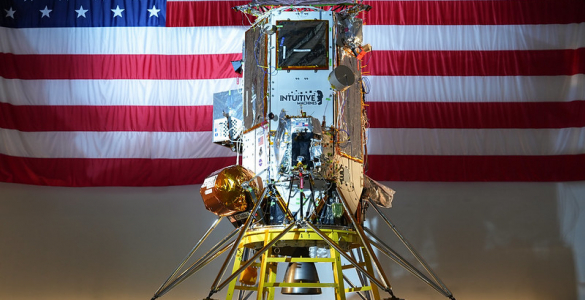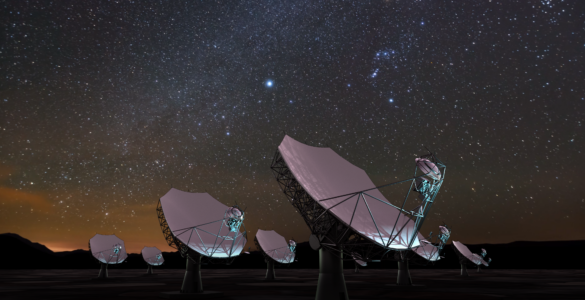HERA’s upgraded observing power will enable it to study more clearly the impact of cosmic dawn, the moment a few hundred million years after the Big Bang when the first stars and galaxies blazed awake.
This event marked the beginning of the epoch of reionization, the roughly billion-year period in the history of the universe when intergalactic space transitioned from a cold, diffuse fog of neutral hydrogen to the brightly lit ionized cosmos we see today. Understanding how this happened and how it helped shape the early universe represents the next frontier in observational cosmology and studies of the origin of structure in the universe.
“Astronomers want to know what happened to the universe after it emerged from its so-called ‘dark ages’,” said Rich Barvainis, National Science Foundation program director, which funds HERA. “HERA will help us answer that question, not by studying the primordial stars and galaxies themselves, but rather by studying how these objects changed the nature of intergalactic space.”
“The first galaxies lit up and started ionizing bubbles of gas around them, and soon these bubbles started percolating and intersecting and making bigger and bigger bubbles,” said Aaron Parsons, associate professor of astronomy at the University of California, Berkeley, and principal investigator for HERA. “Eventually, they all intersected to become this über bubble, leaving the universe as we observe it today: between galaxies the gas is essentially all ionized.”
By studying the boundaries of these bubbles, at different locations and at different periods in time, astronomers hope to map the changes that took place during reionization, getting as close to cosmic dawn as possible.
HERA will make these measurements by observing the telltale 21-centimeter wavelength light emitted by the slowly vanishing sea of neutral hydrogen that filled the space between the galaxies. As this 21-centimeter light travels vast cosmic distances, it becomes redshifted to longer and longer wavelengths by the expansion of the universe. By tuning the receivers on the array to progressively longer wavelengths, HERA is able to study correspondingly older and more distant structures.
“We are at a rare juncture in which the most basic measurement of a fundamental cosmological phenomenon – cosmic reionization – has yet to be made. HERA will enable that measurement, showing us never-before-seen details of the early history of our universe,” said Chris Carilli, an astronomer with the National Radio Astronomy Observatory (NRAO) in Socorro, New Mexico, and a member of the HERA team. “What’s even more exciting is that the structures that HERA will observe bridge the gap in our understanding between the galaxies and galaxy clusters we see today and the faint imprint of the Big Bang we see in the cosmic microwave background.”
“HERA will provide a glimpse into this important but as yet unexplored period of the early universe. The ultraviolet light and X-ray emissions from these primitive objects altered the fundamental nature of the universe surrounding them, and HERA is designed to detect these changes,” said Rich Bradley, HERA team member and an NRAO senior scientist.
NRAO is one of the key partners in and a founding member of the HERA project and is involved in the design of the radio receivers on the array, the data archiving center, the commissioning of the telescope, and its science data analysis.
“NSF funding will bring much-needed capabilities to bear on this exciting field of research,” said NRAO Director Tony Beasley. “I’m delighted that NRAO can play such a pivotal role.”
HERA, which is located in a remote area of South Africa, combines the efforts and lessons learned from other similar pioneering instruments, such as the Murchison Widefield Array and the Donald C. Backer Precision Array for Probing the Epoch of Reionization (PAPER), on which NRAO was a founding member. HERA’s 14-meter dishes are fixed in position, scanning the sky as the Earth rotates.
They are packed into a hexagonal grid 300 meters across.
The National Radio Astronomy Observatory is a facility of the National Science Foundation, operated under cooperative agreement by Associated Universities, Inc.
# # #
In addition to UC Berkeley and NRAO, the HERA partners include the University of Washington, Seattle; the University of California, Los Angeles; Arizona State University, Tempe; the University of Pennsylvania, Philadelphia; the Massachusetts Institute of Technology, Cambridge; Brown University, Providence, Rhode Island; the University of Cambridge, United Kingdom; the Square Kilometer Array, South Africa; and Scuola Normale Superiore, Pisa, Italy.
Other collaborators are the Harvard-Smithsonian Center for Astrophysics in Cambridge, Massachusetts, and the University of KwaZulu Natal in Durban, University of Western Cape in Cape Town and Rhodes University in Grahamstown, all in South Africa.






